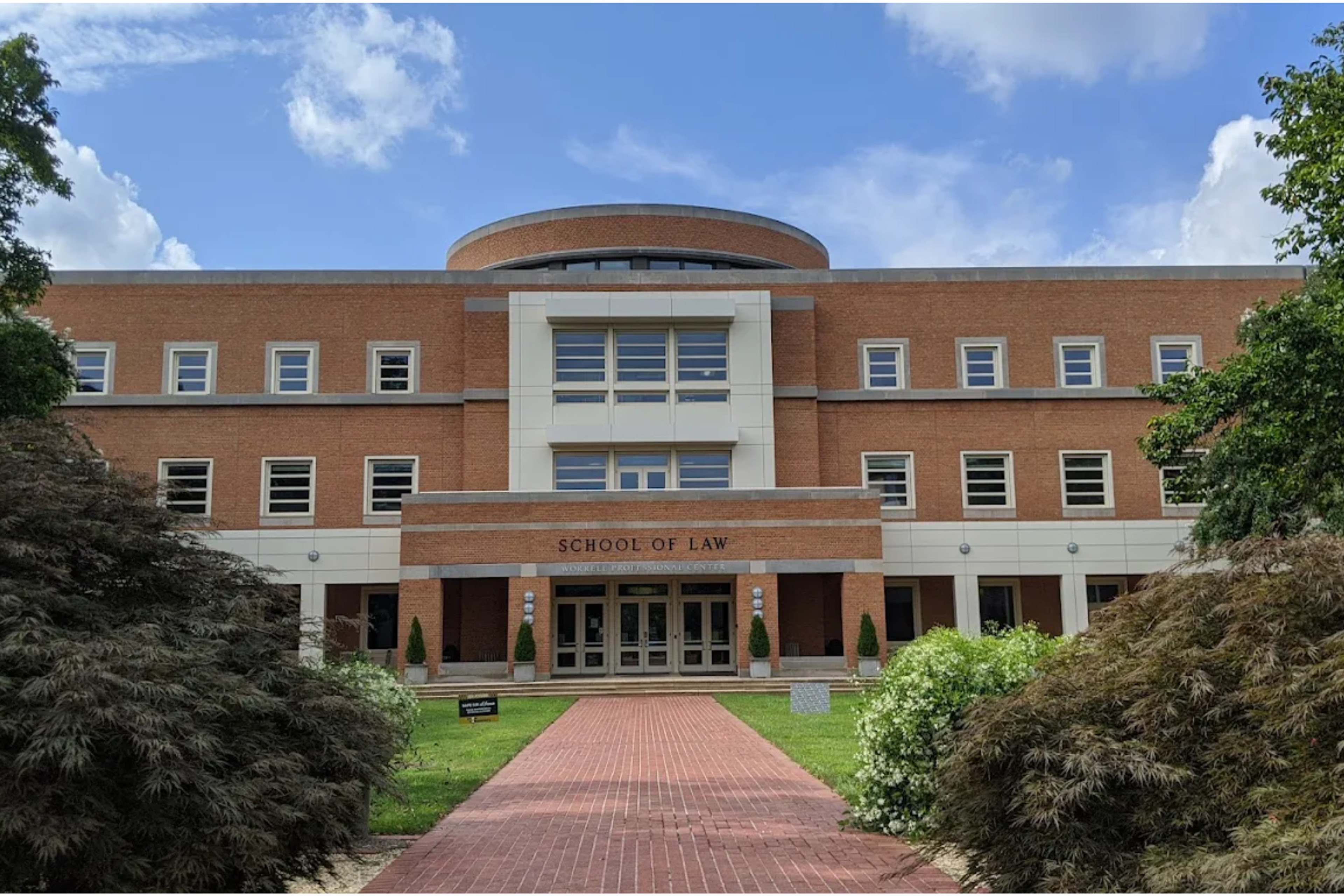Stanford Law School: Acceptance Rates, Deadlines, & How to Get In (2025)
A guide to Stanford Law School, including acceptance rates, deadlines, application requirements, and expert tips, all geared toward helping you apply (and get into) this elite JD program.
Posted June 13, 2025

Join a free event
Learn from top coaches and industry experts in live, interactive sessions you can join for free.
Table of Contents
Why Stanford Law?
Stanford Law School (SLS) isn't just one of the top law schools in the country, it's in a league of its own when it comes to innovation, flexibility, and community. If you're looking for a deeply personalized legal education with unmatched access to Silicon Valley, public interest opportunities, and interdisciplinary study, Stanford should be on your radar.
Here are a few things that make the school stand out compared to other top programs:
- A small, tight-knit community: SLS typically has a class size of 170-180, much smaller than other programs like Harvard Law School that had 560 JD candidates in its class of 2027. Smaller classes mean close relationships with professors, highly collaborative peers, and access to individualized mentorship that’s hard to find at larger institutions.
- Location in the heart of the Silicon Valley: Stanford’s location in Palo Alto, California offers unparalleled exposure to tech, venture capital, and entrepreneurship. For students interested in technology law, IP, startups, or regulatory innovation, Stanford’s proximity to real-world change-makers creates opportunities that are hard to replicate on the East Coast.
- Interdisciplinary flexibility: Stanford has been a pioneer in interdisciplinary legal education. You’re encouraged, and even expected, to take classes across Stanford’s other top-ranked schools, like the Graduate School of Business, School of Engineering, and School of Medicine. The policy lab model and joint degree options (like JD/MBA, JD/PhD, JD/MPP) make it easy to tailor your legal education to complex, modern challenges.
- Rankings and reputation: SLS is regularly ranked in the top 3 best law schools nationally (in 2025, it was tied for #1 with Yale Law by US News), and in the top 10 best law schools for quality of life by the Princeton Review. It also has one of the highest post-graduation employment rates.
Beyond its status, what sets Stanford apart is its culture: intellectually serious but unpretentious, ambitious but collaborative. You’ll find future Supreme Court clerks, startup founders, public defenders, and policy makers studying side-by-side.
Stanford Law School Acceptance Rates (2025)
Getting into Stanford Law School is extraordinarily competitive, and it’s not just about the numbers. For the class of 2026, Stanford’s acceptance rate was approximately 7.26%, making it the most selective law school in the country. For the previous class of 2025, the acceptance rate was roughly 8.85%.
SLS typically has a slightly lower acceptance rate than Harvard Law School (9-12%), slightly above Yale Law School (5-7%). This extreme selectivity means that even highly qualified applicants should view Stanford as a reach – but not an impossible one, especially if you can demonstrate a compelling fit with SLS’s unique culture and strengths.
For the info for all of the T14 law schools, see: T14 Law Schools: Acceptance Rates & Class Profiles
SLS Stats
For the class of 2026, the enrolled candidates had the following stats:
- GPA Range: 3.47-4.19
- LSAT Range: 163-180
- Incoming Class Size: 174
- Total JD Class: 565
- # of Student Organizations: 55
- Clinics: 11
- Student Publications & Law Reviews: 11
- % Students Working on Law Reviews/Journals: 51%
- Student-to-Faculty Ratio: 4.3:1
- Students w/ 1+ Years Out of College: 80%
- Students of Color: 46.54%
- Students With an Advanced Degree: 22%
- Students With Jobs Within 9 Months of Graduating: 98.9%

Stanford Law School Deadlines (2025)
Stanford, and most other law schools, have rolling application deadlines, meaning the earlier you’re able to apply, the better. The deadlines have not yet been released for 2025-2026; here are the dates for 2024-2025, you can expect a similar timeline:
| Deadline | Date |
|---|---|
| Application Available | September 15, 2024 |
| Application Deadline for Knight-Hennessy | December 1, 2024 |
| Application Deadline | February 15, 2025 |
Stanford Law School Application Requirements
Stanford Law’s admissions process is holistic but rigorous. Every part of your application needs to demonstrate academic excellence, intellectual vitality, and a strong sense of purpose. Here’s exactly what you’ll need to apply.
Application & Application Fee: You must complete the entire form and submit it electronically through LSAC. The nonrefundable $85 fee must be sent in prior to submitting the application. There are waivers available, see here for more info on that.
Resume: One to two pages, your resume should describe your academic, extracurricular, and professional experiences. It will be submitted electronically with the rest of the application. Do not include a photo on it.
Personal Statement: Stanford says, “Please describe what aspects of your life experiences, interests, and character would help you make a distinctive contribution to Stanford Law School.” The personal statement is your chance to show who you are beyond the numbers and outside of your numbers (LSAT/GPA), the personal statement is arguably the most important part of your application. Read our guide to the personal statement here.
Optional Essays: SLS’ primary optional essay is about overcoming differences. They say, “At Stanford Law School, we value the ability to communicate constructively across differences – even when the stakes are high or the differences significant. Please discuss a time when you encountered a viewpoint that contrasted with your own and explain how you responded. Would you do anything different if the same thing happened today? Your essay should be approximately one-to-two pages in length.” In addition to this long one, applicants will have the option to choose two of four additional short-answer questions.
Letters of Recommendation: Stanford requires at least two LORs and no more than four that should be submitted directly through the LSAC Letter of Recommendation Service. Ideally, recommenders have knowledge of you in an academic setting. If you have been out of school for a significant period of time, you can submit one letter from an employer or business associate. See more here.
Standardized Test Score: All applicants must either submit an LSAT or GRE score. If you have one or more valid LSAT scores, they must be reported as part of your application. The only circumstance where you may apply without providing an LSAT score is if you have only taken the GRE. Read: LSAT vs. GRE for Law School–Which to Take and How to Ace Both
Importantly, note that Stanford Law does not grant interviews as part of the admissions process. However, they encourage you to visit the school and arrange to meet with a member of the admissions staff.
Next, see: LSAC Credential Assembly Service (CAS): What it Is and How It Works for Law School Applications
How to Get Into Stanford Law School
1. Go beyond "smart" – show "intellectual vitality."
Stanford doesn’t just want applicants with high GPAs and LSAT scores, they want people who are deeply curious, creative thinkers. Your application should demonstrate that you love grappling with complex problems, exploring new ideas, and thinking independently. Use your personal statement, resume, and even your choice of recommenders to highlight moments where you pursued knowledge for its own sake: research projects, independent studies, startup initiatives, or even intellectual risks you took outside the classroom.
2. Write a personal statement that naturally aligns with Stanford's values.
Stanford isn’t looking for a name-drop-heavy or school-specific essay. Instead, they want to see a personal statement that naturally reflects qualities they prioritize: intellectual curiosity, leadership, public impact, and innovation. Focus on telling a genuine story about your motivations, growth, and aspirations. If your authentic experiences align with what makes Stanford special (like interdisciplinary interests or a commitment to service), that connection will come through without needing to force it.
3. Prioritize quality over quantity in experiences.
Stanford values depth over breadth. They would rather see a few experiences where you made a meaningful impact than a laundry list of scattered activities. On your resume and in your essays, emphasize leadership roles, sustained commitments, and clear growth over time. If you’ve been deeply involved in a particular community, cause, or field, lean into that, it can be more impressive than dabbling in 10 different things. It should also be tied to your background, passions, motivations, and goals. They want to see a clear trajectory of where you’ve been and where you’re going, and how Stanford fits into that.
4. Be strategic about LSAT vs GRE, and know your strengths.
If you have a quantitative or STEM-heavy background (especially if applying for a joint degree like a JD/MBA or JD/MS), a high GRE score could play to your advantage. However, if you're aiming for a traditional JD path and have strong verbal reasoning skills, a high LSAT score (in the 172–176 range) will likely remain the safer and stronger bet. If you choose GRE, be prepared to explain how your academic and intellectual profile still matches Stanford's standards.
5. Secure truly personalized, narrative-driven recommendations.
Stanford's admissions team reads between the lines of your letters. They’re looking for recommendations that tell a story about your character, intellectual spark, leadership, and integrity, not just letters that check boxes. Choose recommenders who know you well enough to write specific anecdotes about your work ethic, problem-solving, and impact. A detailed, passionate letter from a professor or mentor is far more valuable than a vague endorsement from a prominent name.
Stanford Law Programs & Opportunities
Stanford Law School offers a range of degree programs designed for different types of legal scholars, practitioners, and policy leaders. While most applicants target the JD program, it's helpful to understand the full landscape, especially if you're considering joint degrees, international study, or academic research paths.
Juris Doctor (JD)
The JD program is Stanford's primary law degree, preparing students for legal practice, academia, business leadership, public service, and more.
Master of Laws (LLM)
Stanford offers five specialized LLM programs designed for lawyers trained outside the U.S. or for U.S. lawyers seeking niche expertise. Note that LLM applicants typically must already hold a first degree in law.
- Corporate Governance and Practice
- Environmental Law and Policy
- Law, Science, and Technology
- International Economic Law, Business and Policy
- Stanford Program in International Legal Studies (SPILS)
Doctor of the Science of Law (JSD)
The JSD program is Stanford’s most advanced law degree, intended for those pursuing academic or scholarly careers. Candidates must have completed an LLM at Stanford or another U.S. institution and must propose a significant dissertation research project.
Master of Legal Studies (MLS)
The MLS is a part-time, interdisciplinary degree for non-lawyers (working professionals, scientists, engineers, policymakers) who need legal knowledge but don’t intend to practice law. This is designed to complement careers in tech, health care, finance, public policy, and more and offers a highly flexible curriculum tailored to the student’s industry or interest area.
Joint Degrees and Cooperative Programs
Stanford Law is known for making joint degrees quite accessible and a significant portion of JD students pursue one. Students can even propose custom joint degrees across departments, a flexibility few peer schools offer. Traditional options include:
- JD/MBA with Stanford GSB
- JD/PhD in fields like economics, political science, and bioengineering
- JD/MPP or JD/MA in public policy, international policy, education, and more
The Bottom Line: Is Stanford Law Right for You?
Stanford Law isn’t just a place to attend law school – it’s a place to build a uniquely flexible, impact-driven career. But because of its small class size, interdisciplinary model, and culture, it’s not the best fit for everyone. Here are some key questions to ask yourself before committing to the Stanford path:
- Do you value collaboration over competition? Stanford’s culture is famously collegial. If you’re looking for a cutthroat environment where you compete against classmates for rankings, Stanford won’t be your ideal match. Students here push each other, but they also support each other. If that resonates with how you want to grow, Stanford is a strong fit.
- Are you excited by flexibility and self-direction? At Stanford, you’ll have immense freedom to craft your academic path, through clinics, cross-registration, joint degrees, and research opportunities. But that freedom comes with responsibility. If you thrive in unstructured, build-your-own-adventure environments rather than rigid, preset paths, you’ll likely thrive here.
- Do you have (or want to build) an interdisciplinary edge? Stanford is at its best when law intersects with technology, public policy, business, environmental science, health, education, and more. You don’t have to have a STEM or business background to fit in, but you should be open to engaging across disciplines and thinking beyond traditional legal frameworks.
- Are you mission-driven? Whether you're aiming for public interest law, academia, tech policy, or corporate leadership, Stanford looks for students who want to make a real-world impact. Admissions officers care about what you hope to change, not just what you want to achieve. If your "why law" story focuses on innovation, service, or systemic change, you'll resonate with what Stanford values.
If you're looking for a highly personalized, forward-thinking legal education, surrounded by a tight-knit, collaborative community, and want to shape not just your career but the future of law itself, Stanford Law could be the perfect fit.
Increase Your Odds of Acceptance With the Help of an Expert
Stanford Law School is one of the most competitive programs in the country and building a successful application takes more than just strong grades and test scores. You need a clear strategy, compelling essays, and a narrative that highlights exactly why you’re a perfect fit for SLS’s unique culture.
Working 1:1 with an experienced admissions coach can help you refine every part of your application: from choosing the right recommenders to crafting a personal statement that captures your intellectual vitality, leadership, and purpose. Many of Leland’s law school admissions coaches have direct experience helping students get into Stanford Law and other top T14 programs. See several of the most popular coaches below and browse all here. If you’re serious about giving yourself the best possible chance, don’t navigate this process alone.
Next, read:
- How Many Law Schools Should You Apply To?
- Law Specialties & How to Choose the Right One for You
- How to Write the "Why X Law School?" Essay (With Examples)
FAQs About Stanford Law School
What LSAT score do you need for Stanford Law?
- For the class of 2026, the LSAT range of admitted students was 163-180. The LSAT score you need depends on your GPA and the rest of the application, but most candidates should shoot for a 170+ to be competitive.
Is Stanford a good school for law?
- Yes, Stanford is one of the best law schools in the country. In 2025, it was tied with Yale Law for #1.
Is it hard to get into Stanford Law?
- Yes, SLS is incredibly competitive. The class of 2026 had an acceptance rate of about ~7%. Applicants should focus on having a great GPA and LSAT score, writing a powerful personal statement, getting strong recommenders, and having a deep understanding of their “why?”
What GPA do you need to get into Stanford Law?
- The GPA range for the class of 2026 was 3.47-4.19 but the average is typically closer to 4.0. Applicants should try and get as high of a GPA as possible. For law school applications, the quantitative factors like LSAT and GPA matter significantly more than some other master’s degree programs.
Browse hundreds of expert coaches
Leland coaches have helped thousands of people achieve their goals. A dedicated mentor can make all the difference.
















